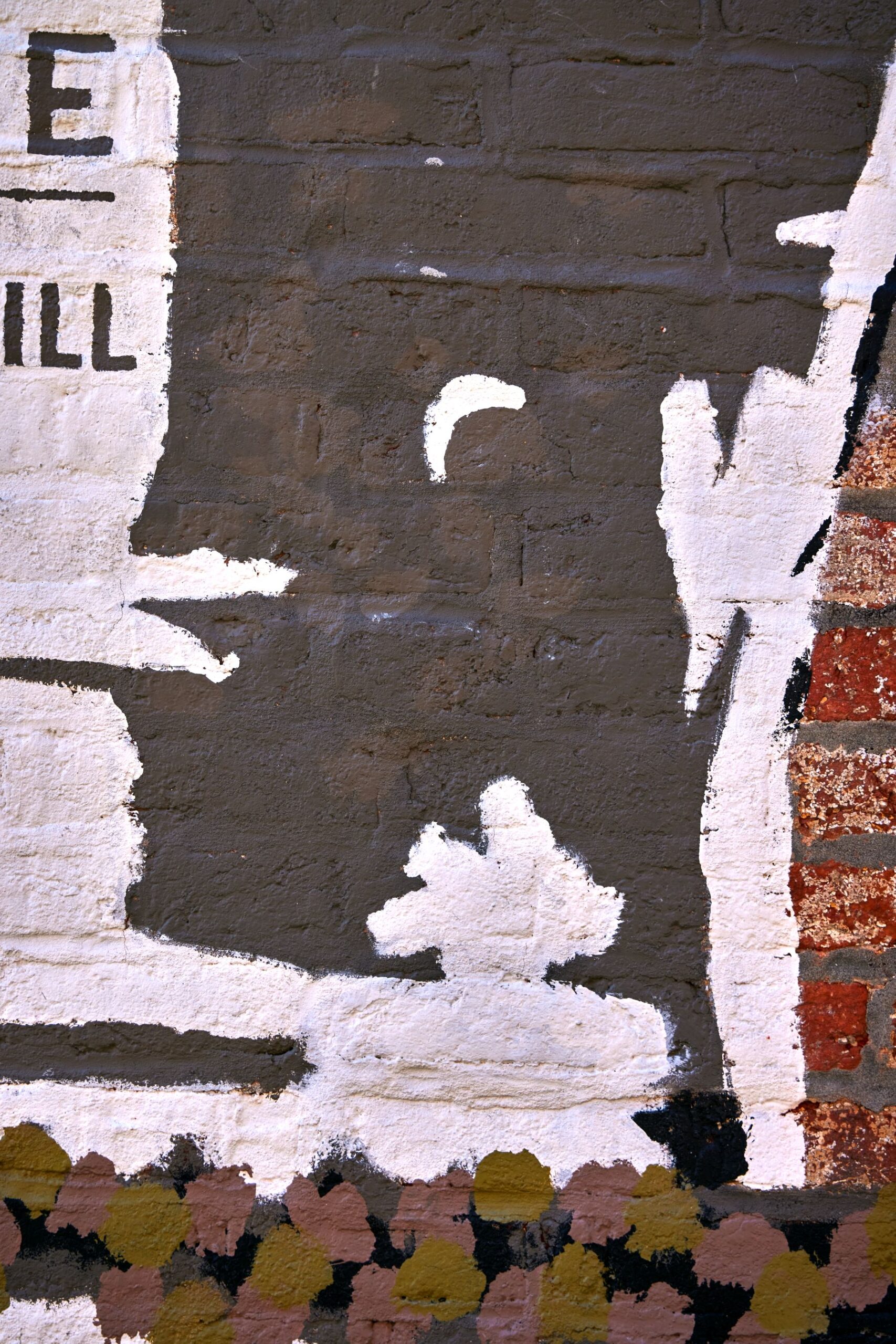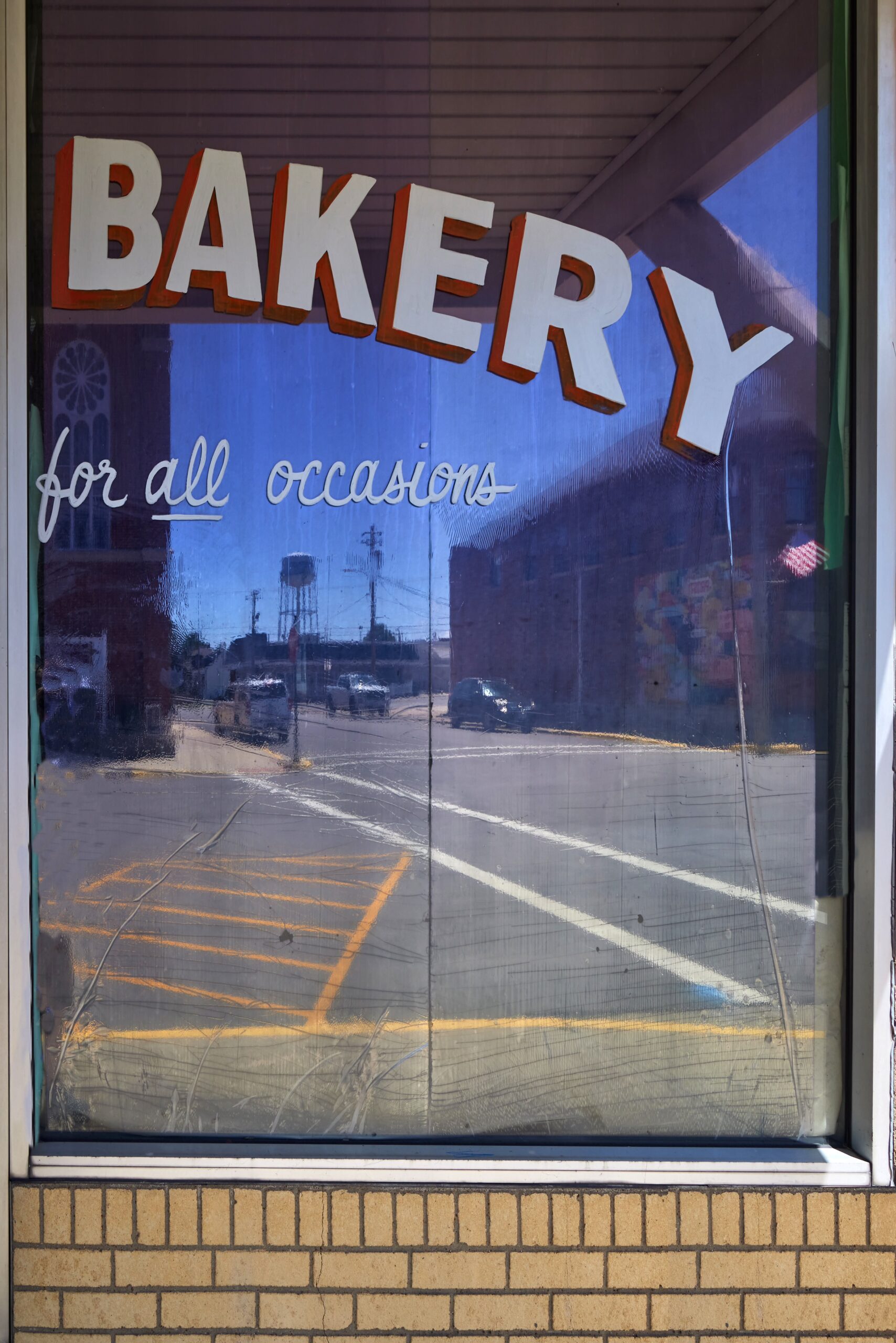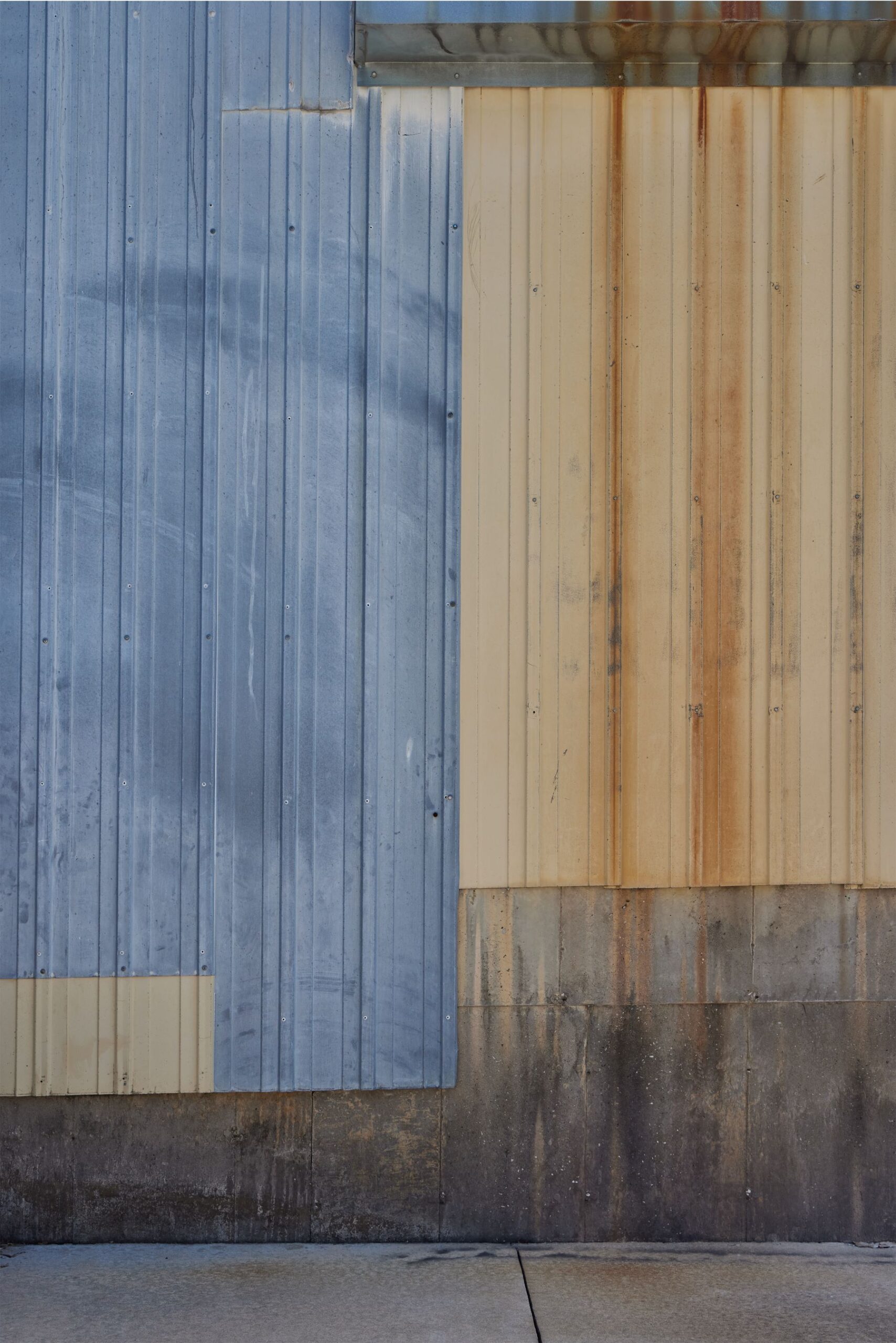
Photo by Michael Eastman
Michael Eastman wants to walk around my little Southern Illinois town with his camera. A photographer whose work is in museums, who has shot the world’s extremes of beauty and decay, wants to walk around Waterloo, Illinois, and shoot? What the hell do I show him?
I make a halfhearted list—the town’s history museum? The skate park? Maybe a dive bar like Willie’s West End? The park? That little house down our street that was built in 1830?
“I want schmutz,” he says when he arrives. Seeing my expression, he explains: messy stuff, little bits of things, surprises. Images that can tell a story you never expected to find.
I leave my list on the kitchen table. As we pull away, I blurt, “Ach. Forgot my sunglasses. But I won’t need to see anything tiny.”
He makes a U-turn. “We are definitely going to be seeing things that are tiny.”
We set out again.
“I usually try to photograph something I feel something about,” he says as we drive uptown. My spirits sink even lower. Waterloo is calm, sweet, quaint, historic. It does not generate strong passion, save perhaps the patriotism that is on display in the flags lining both sides of the street for Memorial Day. Maybe the service in front of the courthouse? All those veterans marching? I get excited. Pure Americana, in a small town that still loves its country—
Eastman has pulled over. He saw an old building under construction and is out of the car now, contemplating the faded delivery door. “This is nice,” he says. “The color’s beautiful. This was one color and as it fades, you start to see the different brush strokes.”
Lousy paint job, I think; the strokes are going every which way.
“What I’m seeing is a landscape,” he says, pointing to a row of short, choppy strokes that, with his words, morph into a ridge of low hills and scrubby trees. “I liken it to going to a museum and looking at an abstract painting and starting to see pictures in it. Lately, I’m seeing a lot of faces, which kind of scares me! But see? Here’s a little bird.”
He gestures, finger tracing the curve of wings. For Eastman, everyday life is an extension of that childhood seek and find game, pictures hidden everywhere he looks.

Photo by Michael Eastman
“So check this out,” he calls, moving a few feet down. “This is stunning. The light is shining at a perfect angle.” Corrugated ridges shimmer like they were washed in silver. “This becomes a landscape, too, but better here than here.” After stepping in several directions, he hands me his camera, showing me how the slant of light changes…everything.
Thinking of my little list, I am embarrassed. I have spent my life looking for what is especially pretty, or soothingly tidy, or conventionally symbolic or colorful. All this texture and imagery, the possibility of beauty within what was castoff and grungy, has slid past me.

Photo by Michael Eastman
“I always saw things that other people didn’t see,” Eastman says, shrugging. Then, just when I am scanning for industrial textures, he stops at a shop window filled with girly tchotchkes. He plays there for a while, cropping tight on details, looking for the geometry and the reflections. Then he surprises me again by stopping at a pioneer-days mural on the side of an old brick building. He is shooting tiny bits of it, I realize, not the scene. He steps back and waves his hand across the mural: “See, I wouldn’t shoot that whole thing, because that’s his or hers. It belongs to whoever painted it. But just this bit, I might be able to use.”
Lately he has been layering, working with transparency, interleaving the images until they tell an entirely new story. Instead of fussing with heavy equipment, he carries a small camera so simple, it has become as much a part of him as eyes or hands. And—this, a surprise to him—he has stopped worrying about what he will create or where it might end up. “I’m doing this strictly for the joy of seeing.”
He stops short, bends to move a gnarled stick until it is resting on top of a gold leaf.
“The act of seeing puts you in the moment in a way you rarely are,” he says. “It’s like a meditation. Once you start looking this way and get locked into it, you start to see everything. You get in that place where you are just open.”
Except, I know plenty of people—maybe me, too—he could teach for a month and they would slip right back into distraction, broken by the occasional pretty sunset or flower.
He nods. Not everybody is made to look this way.

Photo by Michael Eastman
Not everybody will stand for a long time staring down at the seamlines in the asphalt. “These are beautiful,” he says. “Whoever’s making them has no pretention of making anything other than a cover for the crack, yet the line that’s made is perfect. It flows, it’s surprising, and the compositions that are created are remarkable.” We stand there long enough that I begin to see figures dancing. Am I learning, or just hungry and hot?
We pass Waterloo’s once beloved, now shuttered German bakery, and he shoots the window. All I see is black plastic and the painted lettering of the Ahne’s name. But when he shows me the image, I see bright blue sky reflected in the glass, and a flag from across the street, and now it is both beautiful and doubly poignant.

Photo by Michael Eastman
Next he shoots a bunch of stuff on the ground—to me, it looks like a mask used by some island nature cult. Then some goopy, admittedly sculptural shapes on a redbrick building.
“What would you tell a kid about how to take pictures?” I ask, really wanting a boiled-down lesson for myself.
“Just look for things you find interesting. Carry your phone around”—the kid is bound to have a phone—“and shoot what catches your eye. Look at the photo and see how it is different from what your eye saw. Now shoot it again in different light, now from a different angle. Come in tight, zoom out. What you are learning is how to see inside a rectangle. Every time you move that camera, that box changes, and the relationships among everything inside it change.”

Photo by Michael Eastman
When Eastman looks around, his mind does the cropping, composing images inside invisible rectangular frames. “But I’m still surprised as hell when I pick the camera up,” he says. “And then I start to see other things.” His toe scuffs a tangle of leaves and debris on the sidewalk. “There’s the head of an elephant. See?”
It takes me a minute, but once the elephant head pops out, I can see nothing else.

Photo by Michael Eastman
Next lesson: shadows. Which I soon realize I see through, my brain ignoring the shadow instead of registering the pattern it makes. Eastman does not choose to shoot the flag waving above our heads. That is too obvious. Instead, he looks down and shoots the shadow of the flag on the asphalt. “That’s nice,” he says under his breath.
I pry a little more, curious what sends him in these various directions.
“Usually the things I respond to are things I find, not ideas I had ahead of time. There’s something about discovery.”
If you have eyes to see the world fresh.
He stops outside a woodworker’s long shed, patched with different colors. “So here I am, looking. Okay, it’s nothing. Right now, it’s just different siding.” He steps closer and takes a photo of pure geometry, the galvanized metal meeting the beige in a grid like Mondrian drained of primary color. “It’s all about the proportions,” he says, explaining why he cropped his rectangle just that way.

Photo by Michael Eastman
“Okay, now, if I come over here—which I didn’t know till I was over here—and shoot it with a wide angle, it will be a series of diagonals.”
The experiments are constant, recomposing the environment as he goes. “So much of the power of these images is in the isolation of the subject from its context,” he says. “That creates mysterious narratives.”
Finally, we stop for a sandwich. He gestures at the window: “I love that.” I nod eagerly—we have finally reached a point of mutual awe. The big, arched glass-block windows in Honey + Salt, a repair shop-turned-coffeehouse, are fabulous.
Then I realize he is pointing at a nondescript white frame house, visible through the arched window, on the other side of the street.
“That?”
He shrugs. “I like the shape of it.”
Read more by Jeannette Cooperman here.
